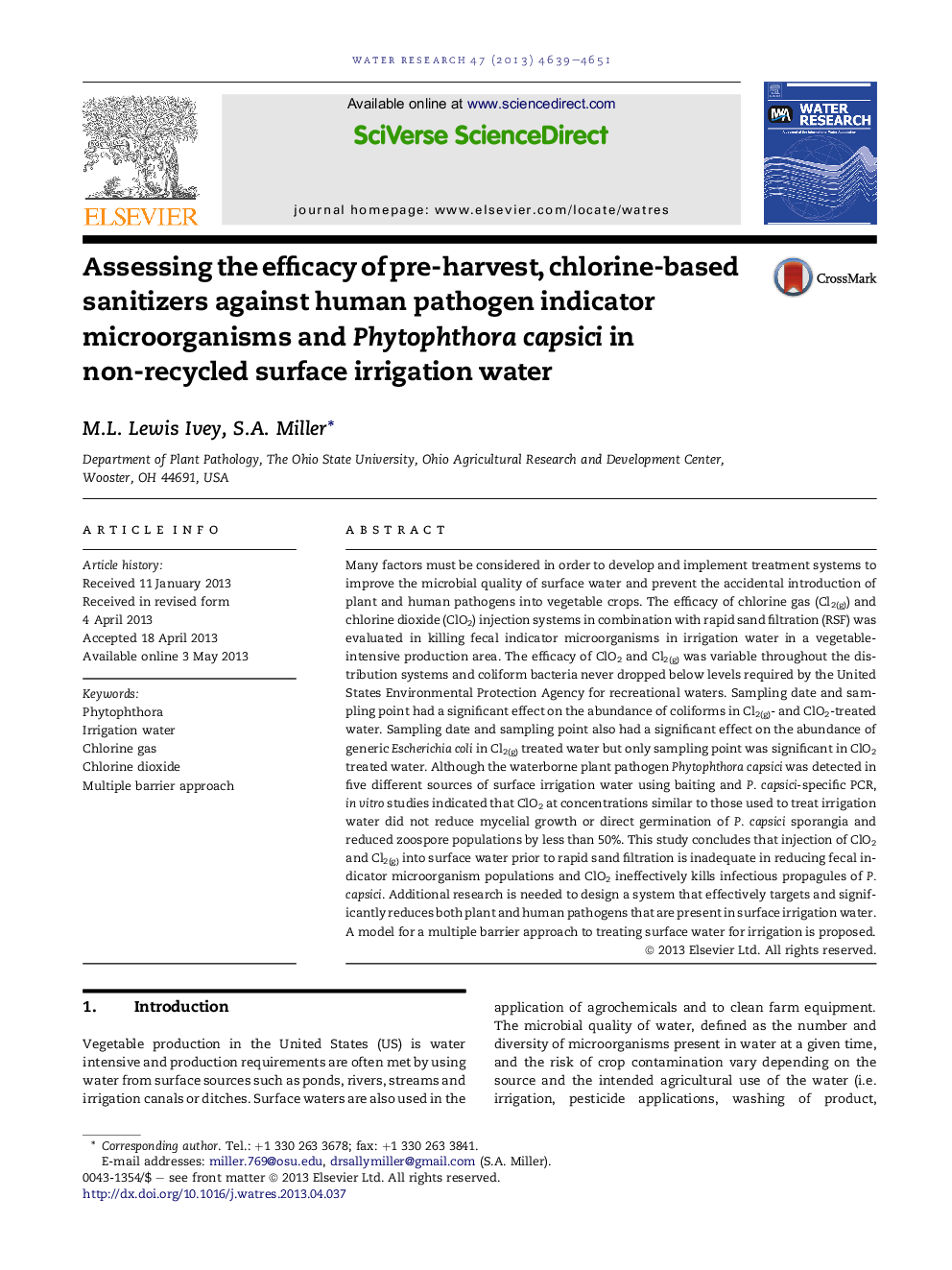| کد مقاله | کد نشریه | سال انتشار | مقاله انگلیسی | نسخه تمام متن |
|---|---|---|---|---|
| 4482009 | 1316845 | 2013 | 13 صفحه PDF | دانلود رایگان |

• Rapid sand filtration following chlorination did not kill fecal indicator microbes.
• Phytophthora capsici is present in Ohio surface irrigation water.
• Chlorine dioxide (1–3 ppm) was ineffective against Phytophthora capsici spores.
• A model for a multiple barrier approach to treating irrigation water was proposed.
Many factors must be considered in order to develop and implement treatment systems to improve the microbial quality of surface water and prevent the accidental introduction of plant and human pathogens into vegetable crops. The efficacy of chlorine gas (Cl2(g)) and chlorine dioxide (ClO2) injection systems in combination with rapid sand filtration (RSF) was evaluated in killing fecal indicator microorganisms in irrigation water in a vegetable-intensive production area. The efficacy of ClO2 and Cl2(g) was variable throughout the distribution systems and coliform bacteria never dropped below levels required by the United States Environmental Protection Agency for recreational waters. Sampling date and sampling point had a significant effect on the abundance of coliforms in Cl2(g)- and ClO2-treated water. Sampling date and sampling point also had a significant effect on the abundance of generic Escherichia coli in Cl2(g) treated water but only sampling point was significant in ClO2 treated water. Although the waterborne plant pathogen Phytophthora capsici was detected in five different sources of surface irrigation water using baiting and P. capsici-specific PCR, in vitro studies indicated that ClO2 at concentrations similar to those used to treat irrigation water did not reduce mycelial growth or direct germination of P. capsici sporangia and reduced zoospore populations by less than 50%. This study concludes that injection of ClO2 and Cl2(g) into surface water prior to rapid sand filtration is inadequate in reducing fecal indicator microorganism populations and ClO2 ineffectively kills infectious propagules of P. capsici. Additional research is needed to design a system that effectively targets and significantly reduces both plant and human pathogens that are present in surface irrigation water. A model for a multiple barrier approach to treating surface water for irrigation is proposed.
Journal: Water Research - Volume 47, Issue 13, 1 September 2013, Pages 4639–4651